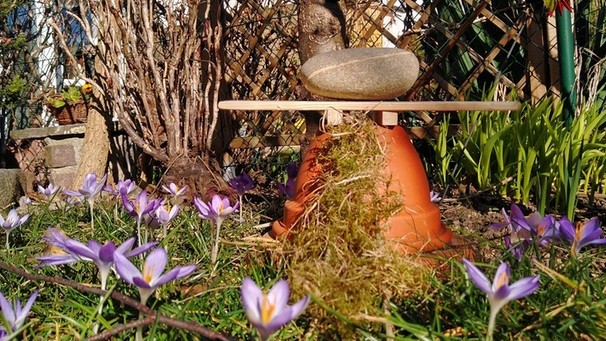With the first blossoms, the heavyweights among the wild bees, the bumblebees, are buzzing through our gardens again. In February, many queens are already on the move – in search of a suitable dwelling. With a few simple steps you can provide the animals with a nesting site.
Towards the end of February, the bumblebee queens awaken from hibernation. They are the only ones of their colony to have survived, their court having died off before winter.
Early in the spring, when the first warming rays of sunshine sweep across the fields and gardens, they set out in search of a dwelling to establish a new colony. Around 30 species of bumblebee are native to our country, each with different requirements for their dwelling: Earth bumblebees prefer burrows as nesting sites, while garden bumblebees nest on or just below the ground.
Here’s what you should do if you see a debilitated bumblebee in the spring: Here’s how you can save a bumblebee
How to recognize a queen bumblebee in search of a nest
If you see a bumblebee flying from flower to flower in search of food, you can assume that this bumblebee already has a nest.
Queens in search of a new dwelling tend to fly in zigzags and “close to the ground” to find suitable places such as rock piles or holes in the ground. If you actually see a bumblebee with this behavior in your garden, you can quickly offer it a place to live – a simple bumblebee pot.
Here’s what you need for the bumblebee pot:
- a clay flower pot
- two short pieces of wood (about 10 centimeters long, at least 1.5 centimeters thick)
- a wooden board (about as wide as the pot)
- as filling material: a handful of straw or hay and dry moss from your own garden
- a stone to weigh it down
Place the bumblebee pot in a sheltered spot (not in the sun, the pot will heat up too much otherwise) and close to the ground; if you still have time, create a connection from the ground to the entrance hole with a piece of wood or moss – this increases the likelihood that a queen looking for a home will accept your bumblebee pot.


